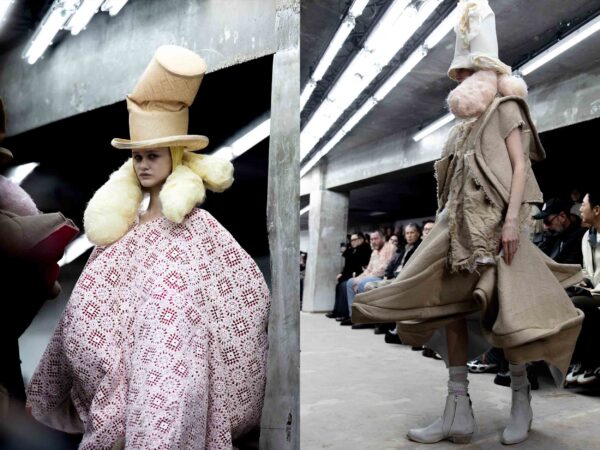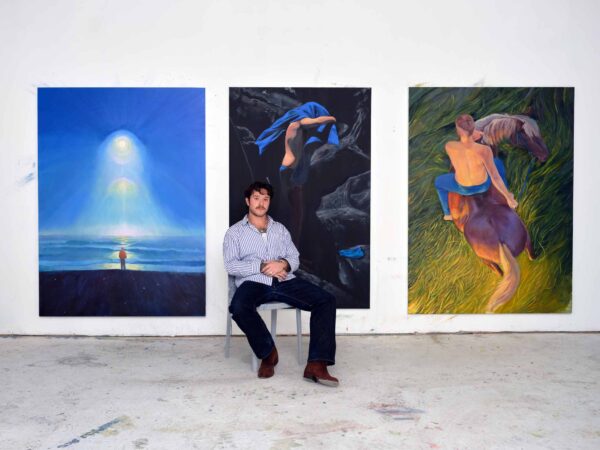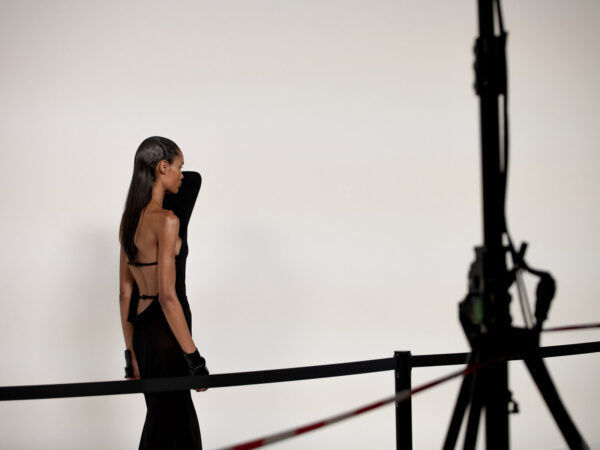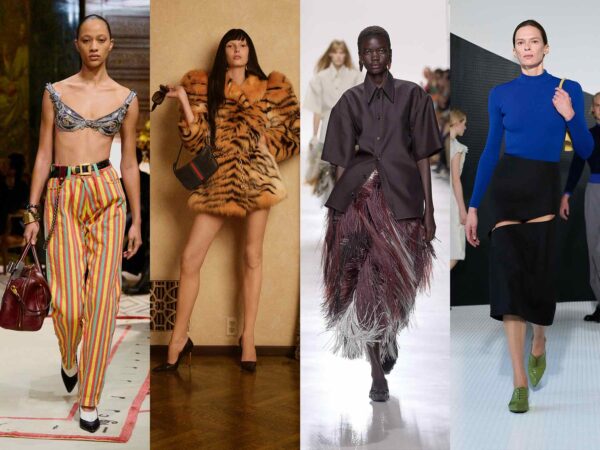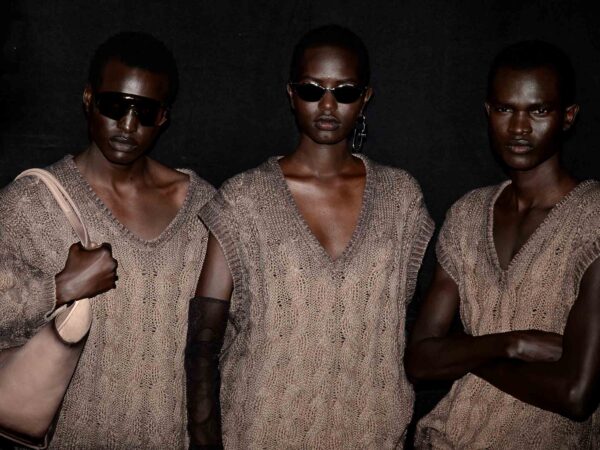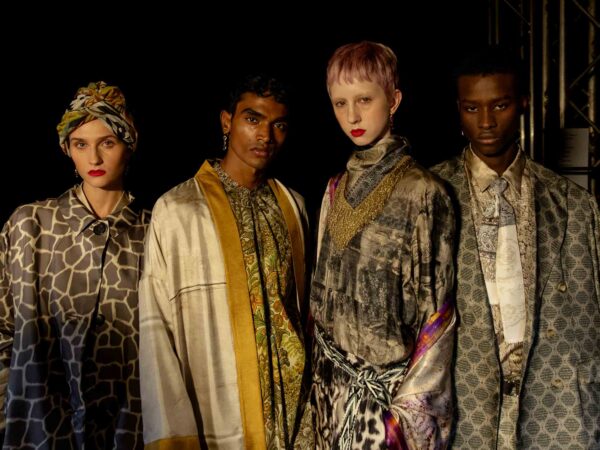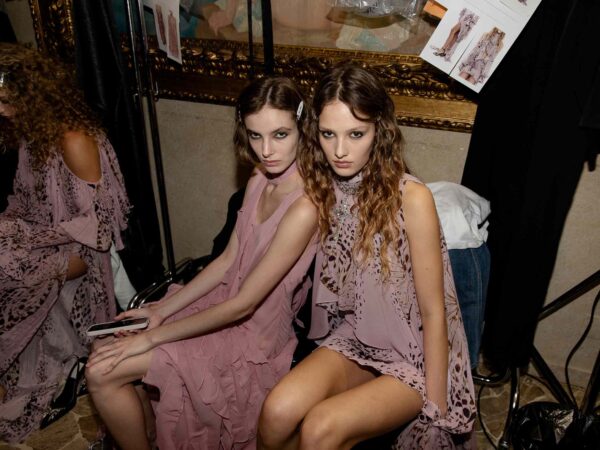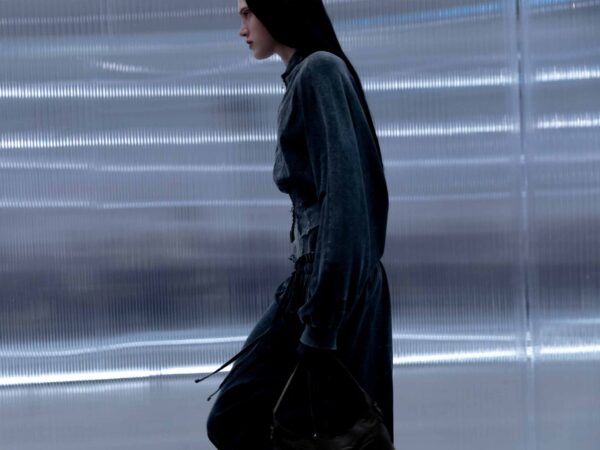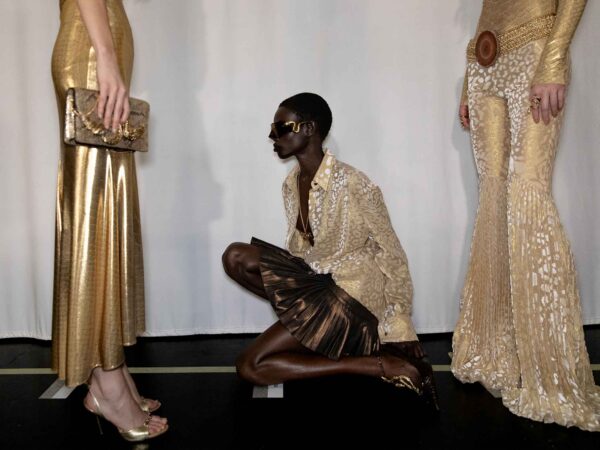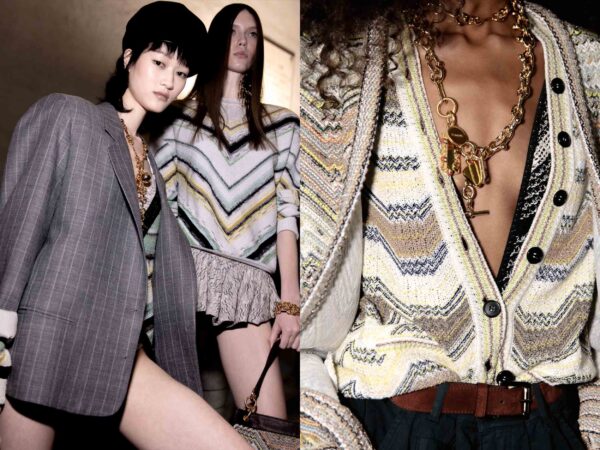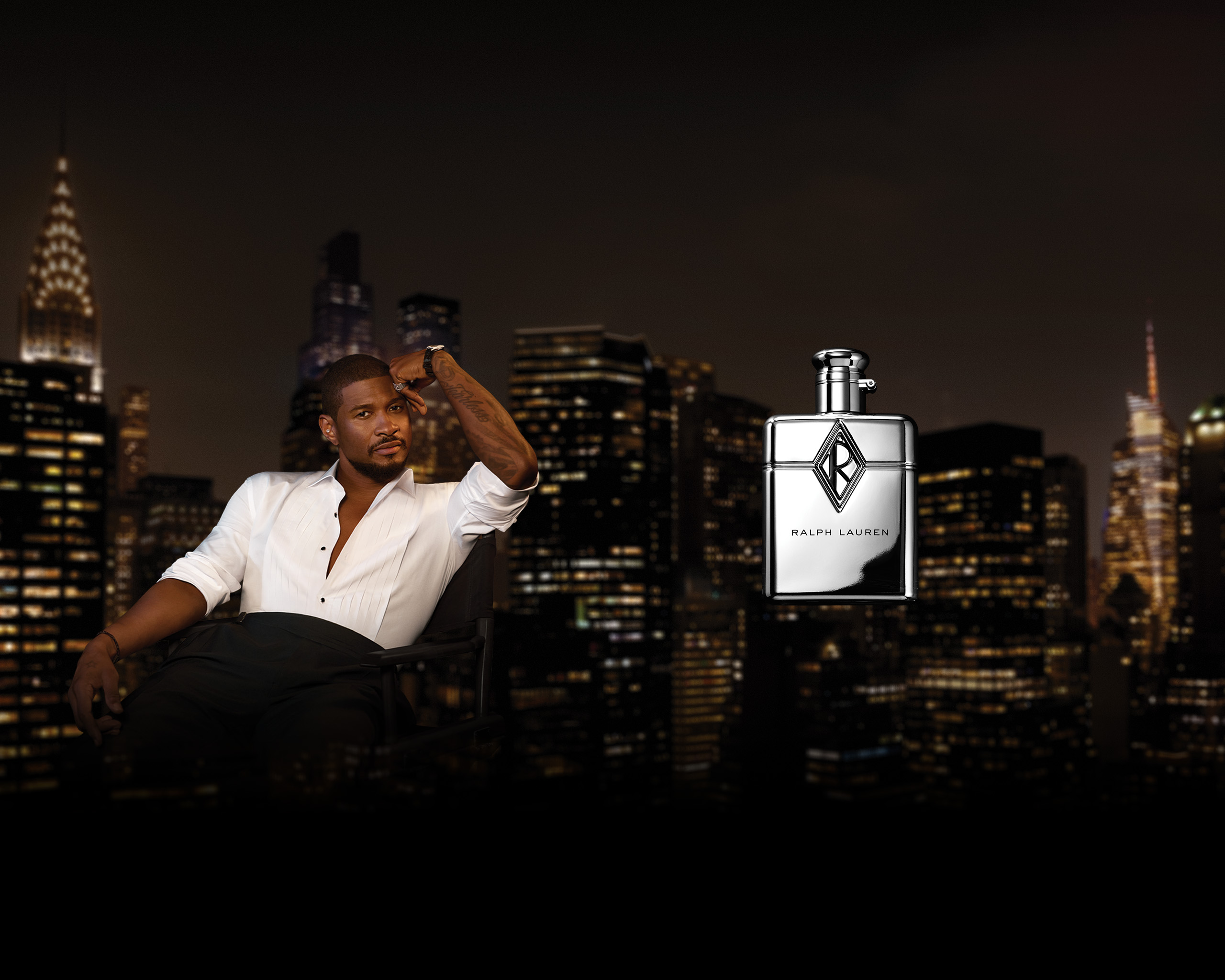The jewelry designer discusses dropping out of fashion school, discovering jewelry, and his latest partnership.
Brazilian-born, London-based jewelry designer Alan Crocetti doesn’t follow trends, nor does he follow the current beat of the jewelry industry. During his studies in womenswear design at Central Saint Martins, Crocetti developed a distinct interest for jewelry, and decided to drop out of the prestigious fashion school to pursue his newfound dream. Crocetti presented his debut collection under the Fashion East umbrella in 2015. He was, later on, picked up by Benjamin Huseby and Serhat Isik of GmbH to produce a limited selection of earrings and silver accessories for the Berlin-based fashion house.
Crocetti’s work stands out in the field of contemporary jewelry designers thanks to his heretical approach to timeless pieces. They are never boring, nor minimalistic. The jewelry consists of noble metals embellished with semi-fine stones, and embodies the gender-fluid nature of contemporary jewelry. Ear cuffs, earrings, rings, and necklaces are delicate to the eye but robust, unique, and modern. During this season’s New York Fashion Week, Crocetti added another collaboration to his resume—with none other than Helmut Lang. Document sat down with Crocetti to discuss dropping out of college, his Brazilian roots, and his latest partnership.
Above The Fold

Sam Contis Studies Male Seclusion

Slava Mogutin: “I Transgress, Therefore I Am”

The Present Past: Backstage New York Fashion Week Men’s Spring/Summer 2018

Pierre Bergé Has Died At 86

Falls the Shadow: Maria Grazia Chiuri Designs for Works & Process

An Olfactory Memory Inspires Jason Wu’s First Fragrance

Brave New Wonders: A Preview of the Inaugural Edition of “Close”

Georgia Hilmer’s Fashion Month, Part One

Modelogue: Georgia Hilmer’s Fashion Month, Part Two

Surf League by Thom Browne

Nick Hornby: Grand Narratives and Little Anecdotes

The New Helmut

Designer Turned Artist Jean-Charles de Castelbajac is the Pope of Pop

Splendid Reverie: Backstage Paris Haute Couture Fall/Winter 2017

Tom Burr Cultivates Space at Marcel Breuer’s Pirelli Tire Building

Ludovic de Saint Sernin Debuts Eponymous Collection in Paris

Peaceful Sedition: Backstage Paris Fashion Week Men’s Spring/Summer 2018
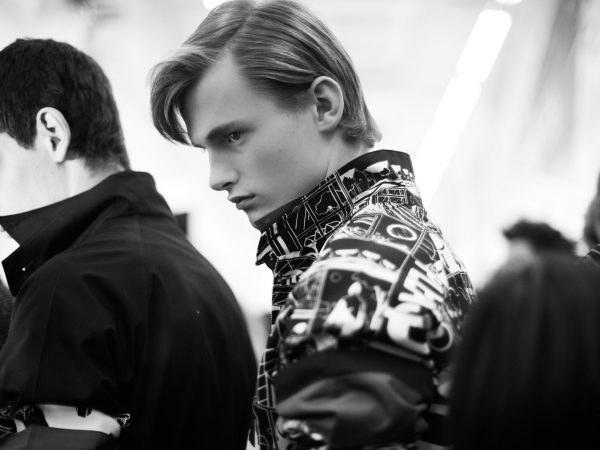
Ephemeral Relief: Backstage Milan Fashion Week Men’s Spring/Summer 2018

Olivier Saillard Challenges the Concept of a Museum

“Not Yours”: A New Film by Document and Diane Russo

Introducing: Kozaburo, 2017 LVMH Prize Finalist

Introducing: Marine Serre, 2017 LVMH Prize Finalist

Conscious Skin

Escapism Revived: Backstage London Fashion Week Men’s Spring/Summer 2018

Introducing: Cecilie Bahnsen, 2017 LVMH Prize Finalist

Introducing: Ambush, 2017 LVMH Prize Finalist

New Artifacts

Introducing: Nabil Nayal, 2017 LVMH Prize Finalist

Bringing the House Down

Introducing: Molly Goddard, 2017 LVMH Prize Finalist

Introducing: Atlein, 2017 LVMH Prize Finalist

Introducing: Jahnkoy, 2017 LVMH Prize Finalist

LVMH’s Final Eight

Escaping Reality: A Tour Through the 57th Venice Biennale with Patrik Ervell

Adorned and Subverted: Backstage MB Fashion Week Tbilisi Autumn/Winter 2017

The Geometry of Sound

Klaus Biesenbach Uncovers Papo Colo’s Artistic Legacy in Puerto Rico’s Rainforest

Westward Bound: Backstage Dior Resort 2018

Artist Francesco Vezzoli Uncovers the Radical Images of Lisetta Carmi with MoMA’s Roxana Marcoci

A Weekend in Berlin

Centered Rhyme by Elaine Lustig Cohen and Hermès

How to Proceed: “fashion after Fashion”

Robin Broadbent’s Inanimate Portraits

“Speak Easy”

Revelations of Truth

Re-Realizing the American Dream

Tomihiro Kono’s Hair Sculpting Process

The Art of Craft in the 21st Century

Strength and Rebellion: Backstage Seoul Fashion Week Autumn/Winter 2017

Decorative Growth

The Faces of London

Document Turns Five
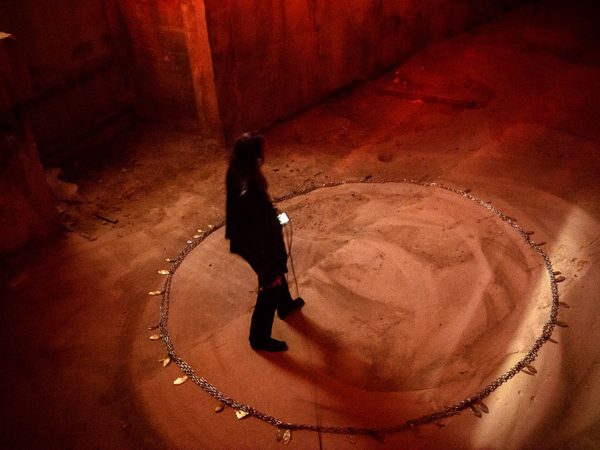
Synthesized Chaos: “Scholomance” by Nico Vascellari

A Whole New World for Janette Beckman

New Ceremony: Backstage Paris Fashion Week Autumn/Winter 2017
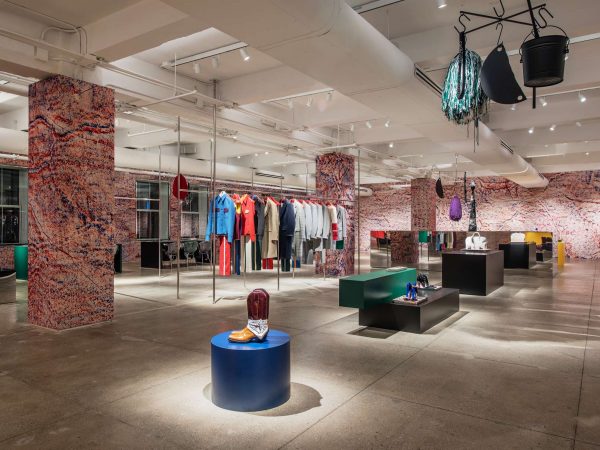
New Perspectives on an American Classic

Realized Attraction: Backstage Milan Fashion Week Autumn/Winter 2017

Dematerialization: “Escape Attempts” at Shulamit Nazarian

“XOXO” by Jesse Mockrin

Brilliant Light: Backstage London Fashion Week Autumn/Winter 2017

The Form Challenged: Backstage New York Fashion Week Autumn/Winter 2017

Art for Tomorrow: Istanbul’74 Crafts Postcards for Project Lift

Inspiration & Progress

Paskal’s Theory of Design

On the Road

In Taiwan, American Designer Daniel DuGoff Finds Revelation

The Kit To Fixing Fashion

The Game Has Changed: Backstage New York Fashion Week Men’s Autumn/Winter 2017

Class is in Session: Andres Serrano at The School

Forma Originale: Burberry Previews February 2017

“Theoria”

Wearing Wanderlust: Waris Ahluwalia x The Kooples

Approaching Splendor: Backstage Paris Haute Couture Spring/Summer 2017

In Florence, History Returns Onstage

An Island Aesthetic: Loewe Travels to Ibiza

Wilfried Lantoine Takes His Collection to the Dancefloor

A Return To Form: Backstage New York Fashion Week Spring/Summer 2018

20 Years of Jeremy Scott

Offline in Cuba

Distortion of the Everyday at Faustine Steinmetz

Archetypes Redefined: Backstage London Fashion Week Spring/Summer 2018

Spring/Summer 2018 Through the Lens of Designer Erdem Moralıoğlu

A Week of Icons: Backstage Milan Fashion Week Spring/Summer 2018

Toasting the New Edition of Document

Embodying Rick Owens

Prada Channels the Wonder Women Illustrators of the 1940s
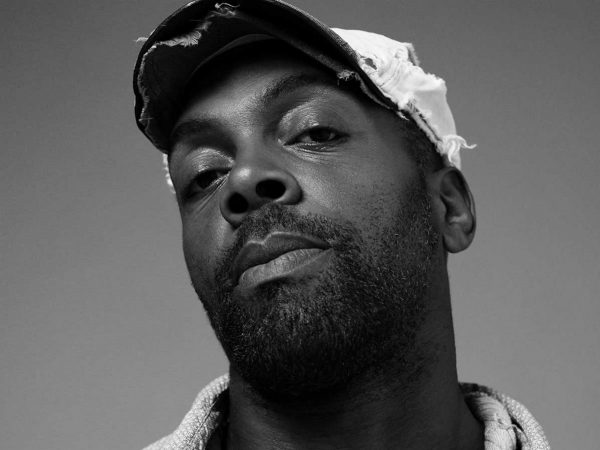
Andre Walker’s Collection 30 Years in the Making

Fallen From Grace, An Exclusive Look at Item Idem’s “NUII”

Breaking the System: Backstage Paris Fashion Week Men’s Autumn/Winter 2017

A Modern Manufactory at Mykita Studio

A Wanted Gleam: Backstage Milan Fashion Week Men’s Autumn/Winter 2017

Fashion’s Next, Cottweiler and Gabriela Hearst Take International Woolmark Prize

Beauty in Disorder: Backstage London Fashion Week Men’s Autumn/Winter 2017

“Dior by Mats Gustafson”

Prada’s Power

George Michael’s Epochal Supermodel Lip Sync

The Search for the Spirit of Miss General Idea

A Trace of the Real

Wear and Sniff

Underwater, Doug Aitken Returns to the Real
Madeleine Holth—I understand you grew up in Belo Horizonte, Brazil?
Alan Crocetti—It was a very amazing childhood, back when kids used to go to the streets to play and there were barely any virtual activities. I was a very curious kid and a big-time dreamer. I would venture [into] whatever I felt like, even if I would quit and start something else months later. My parents always supported me in whatever I wanted to do creatively and I grew up in a pretty united household—that’s a privilege. I came out when I was 16 and my dad’s first words were, ‘I promise you, you will never find prejudice in this house.’ That made me a lot of stronger to face the world.
Madeleine—Do you remember your first encounter with fashion?
Alan—My parents had a knitwear factory so I grew up in it playing with swatches dressing up action figures, a real cliché fashion designer childhood. However, I didn’t really think I would work in fashion. I wanted to be a plastic surgeon at some point, taking that I’m very into surrealism—let’s say it’s good I didn’t pursue that.
Madeleine—How has Brazil influenced you and your work?
Alan—The Pampulha region of Belo Horizonte, where I grew up, was where the architect Oscar Niemeyer and Landscape architect Burle Marx developed some buildings prior to the construction of the capital, Brasilia. Being in touch with that and also nature influenced me not only as a designer but as a person. My collection Odyssey was heavily influenced by those two Brazilian modernists.
Madeleine—When and why did you decide to relocate to London?
Alan—My parents went bankrupt just when I started studying fashion in Brazil. I couldn’t carry on studying there in a pretty expensive university whilst seeing everything they built fall apart right in front of me. I had plans to go to Europe at some point but that just speeded things up. I’m the oldest of three brothers, and I figured I could start working. They needed more support than me. With my Italian citizenship, I could go to the university I wanted to go in the first place, which was Central Saint Martins, in the city I had always dreamt of living in, London.
Madeleine—You decided to drop out of college right before graduation. Why did you do that?
Alan—I had some issues with some papers and I wasn’t really getting my student loan, so I had to start working full time. It happens that I was late for my final crit[ique], and my tutor at the time said that even though I had a good collection, because of my lateness I would no longer take part in the internal fashion show, but I could still finish everything and get my degree. I didn’t spend all these years there for a piece of paper, so without the show, I really wasn’t interested. We are designers—it’s all about the work, not the grades.
Madeleine—What triggered your interest in jewelry design?
Alan—I’ve always wanted to design everything and have my hands in literally whatever I could make. That was also my downfall during the CSM final collection, because I was also designing all the accessories and jewelry for the show. But it was also my ray of light. Had I not made the jewelry for the collection I would probably be doing something else right now. Apart from the fact that I love jewelry, I really fell in love with the whole process, the challenge of it, and how little people pay attention to something so exciting. I refused to see jewelry as a supporting role, and still do. My jewelry can be worn with literally everything from basic tees to black tie or ball gowns.
Madeleine—Can you tell me how you came to work with Helmut Lang?
Alan—They contacted me as soon as I got back from Paris Fashion week this January, and we got things going [immediately]. Mark Thomas and Thomas Cawson were just starting this new Helmut era and I was incredibly grateful, honored, and excited to be a part of it. Mark, Thomas, and the stylist Carlos Nazario are such a dream team.
Madeleine—How does this collection differ from other collaborations you’ve done in the past?
Alan—In every [previous] collaboration, I have the privilege of [working] on the ideas and give my own take based on the brand’s mood board. For Helmut Lang, it was literally my brand integrated into their show.





